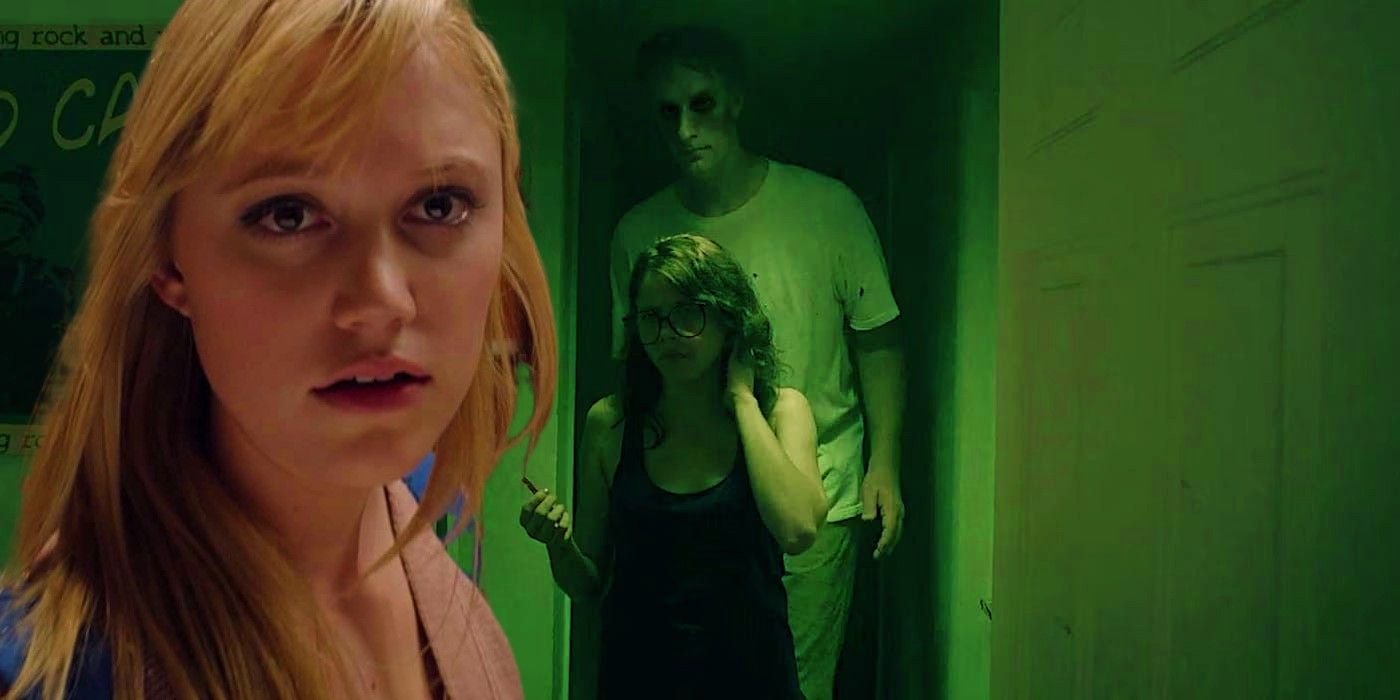A Modern Horror Classic That Redefines Fear
David Robert Mitchell’s 2014 horror film It Follows has quickly earned its place as one of the most original and unsettling horror films of the 21st century. With a unique concept, minimalist storytelling, and haunting atmosphere, the film reimagines the idea of a supernatural curse through a deeply psychological and symbolic lens. At its core, It Follows taps into primal fears — of death, of being hunted, of isolation — and presents them in a way that feels both timeless and urgently modern.
The story centers on Jay Height, a 19-year-old college student living in suburban Detroit. After a seemingly innocent sexual encounter, Jay discovers that she has become the target of a terrifying curse: a supernatural entity that can take the form of any person — stranger or familiar — and relentlessly follows her on foot. The only way to avoid being killed by the entity is to pass it on by having sex with another person, who then becomes its new target. But if that person dies, the curse reverts back to the previous host.
What makes It Follows so chilling is its quiet, creeping dread. The monster never runs. It never hides. It simply walks, unblinking and unstoppable. This slow, deliberate pace mirrors the inescapability of death itself — a theme that critics and scholars have often explored in the film. While the plot revolves around a sexually transmitted curse, the movie isn’t moralistic or preachy. Instead, it uses this premise to explore larger themes: the loss of innocence, the anxiety of adolescence, and the existential weight of growing up in a world filled with invisible threats.

Visually, It Follows is stunning. Cinematographer Mike Gioulakis creates an eerie, dreamlike atmosphere filled with wide shots, symmetrical framing, and slow pans that keep the audience constantly scanning the background for signs of the approaching entity. The retro-futuristic setting — where characters use flip phones alongside old-school TVs and vintage cars — gives the film a timeless, surreal quality. Adding to the unease is the synth-heavy score by Disasterpeace, which evokes classic John Carpenter films while establishing a soundscape that is both nostalgic and menacing.
Critically acclaimed for its originality and execution, It Follows became a sleeper hit and sparked debates about horror symbolism and genre evolution. Some interpret the monster as a metaphor for sexually transmitted diseases, while others see it as an embodiment of trauma or guilt. Regardless of interpretation, the film’s ambiguity is part of its power — it lingers in the mind long after the credits roll.
It Follows succeeds not through jump scares or gore, but through atmosphere, tension, and concept. It doesn’t just scare — it haunts. By blending classic horror tropes with contemporary anxieties, Mitchell created a film that feels both fresh and enduring. Nearly a decade later, it remains one of the most quietly terrifying films of its time — a reminder that sometimes, what truly frightens us doesn’t run... it follows.
-1751964912-q80.webp)
-1751614448-q80.webp)

-1752633462-q80.webp)